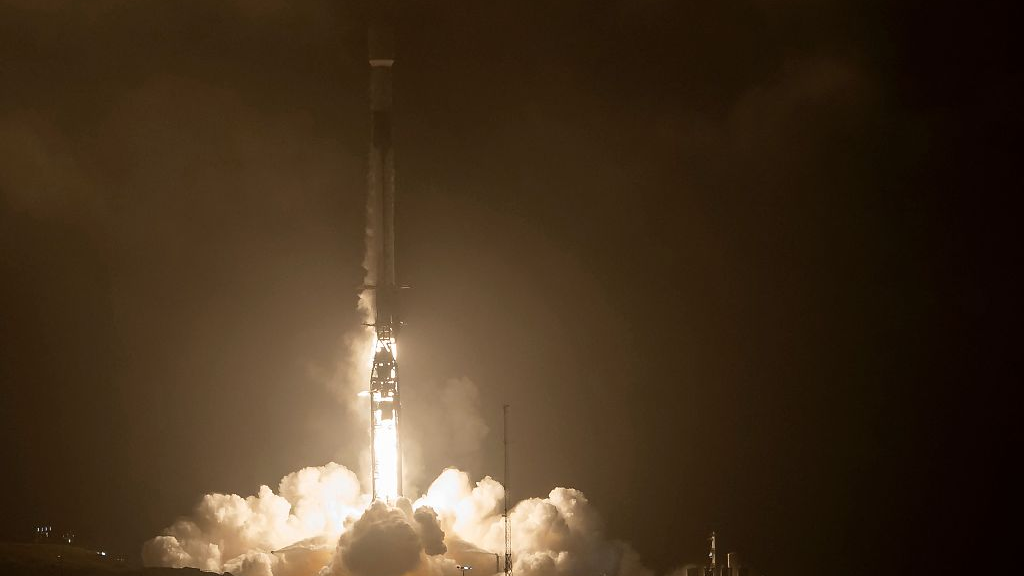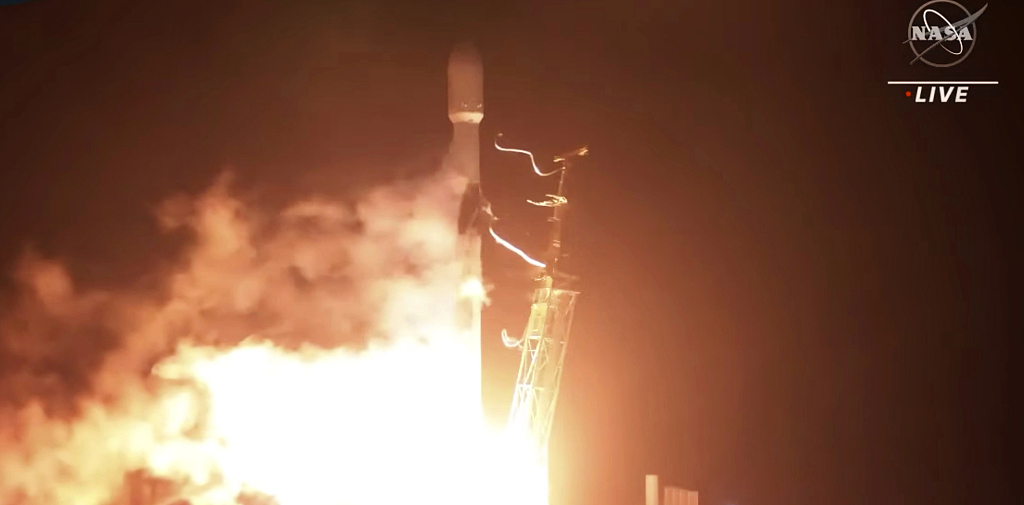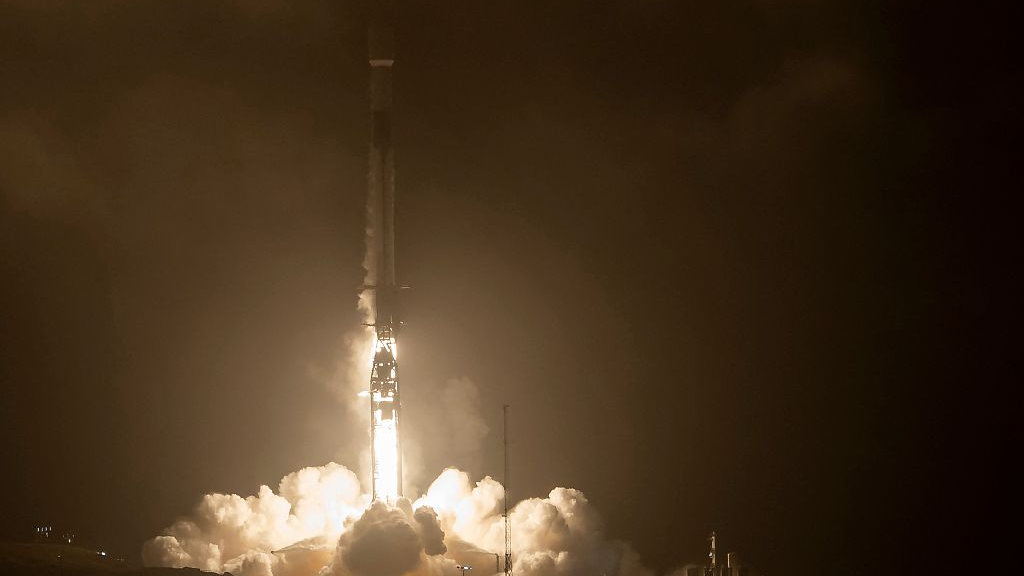00:55

A SpaceX Falcon 9 rocket commissioned by NASA blasted off from California on Tuesday to demonstrate a planetary defense system against near-Earth objects (NEO) by deflecting an asteroid off a collision course.
The launch is the world's first mission to test asteroid-deflecting technology, NASA said on Twitter.

A SpaceX Falcon 9 rocket with the Double Asteroid Redirection Test, or DART, spacecraft on board, lifts off, November 23, 2021, from California, U.S. /CFP
A SpaceX Falcon 9 rocket with the Double Asteroid Redirection Test, or DART, spacecraft on board, lifts off, November 23, 2021, from California, U.S. /CFP
The Double Asteroid Redirection Test (DART) mission is directed by NASA to Johns Hopkins University. According to NASA, DART is a planetary defense-driven test of technologies at a total cost of $330 million.
DART spacecraft is scheduled to arrive at the target asteroid system in late September 2022 when it is within 11 million kilometers of Earth, then striking an object known as Dimorphos at the speed of more than 24,000 kilometers per hour (6.6 km/s). It will allow telescopes and planetary radar on Earth to measure its impact on the object.

A SpaceX Falcon 9 rocket launches with the Double Asteroid Redirection Test, or DART, spacecraft on board, November 23, 2021, from Space Launch Complex 4E at Vandenberg Space Force Base in California, U.S. /CFP
A SpaceX Falcon 9 rocket launches with the Double Asteroid Redirection Test, or DART, spacecraft on board, November 23, 2021, from Space Launch Complex 4E at Vandenberg Space Force Base in California, U.S. /CFP
"Astronomers will be able to compare observations from Earth-based telescopes before and after DART's kinetic impact to determine how much the orbital period of Dimorphos changed," said Tom Statler, DART program scientist at NASA HQ, "That's the key measurement that will tell us how the asteroid responded to our deflection effort."
However, it will take ground-based telescope months after the impact to demonstrate the change of rotation period of the target. "We expect to get initial results about the change of Dimorphos' orbit within a few weeks of DART's impact next year," said Andy Rivkin, DART investigation team lead.

